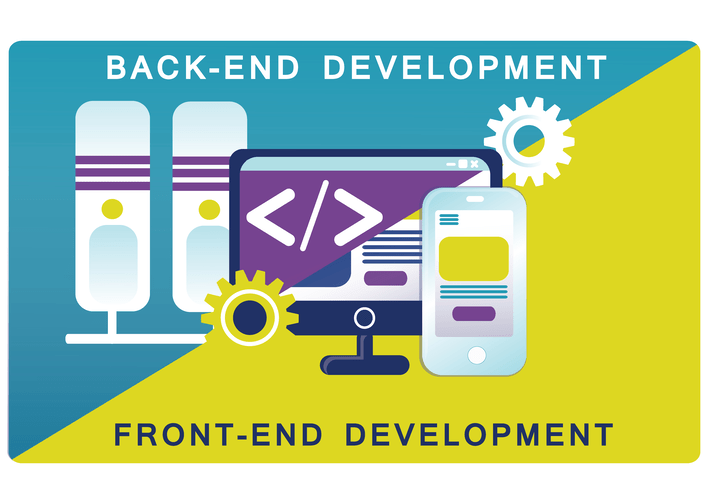Hybrid Integration Platform: 3 Important Drivers On Your Hip Strategy
Posted by: administrator | Posted on: October 20, 2022They typically will offer out-of-the-box connectors that may allow you to configure integrations as a substitute of coding them, which frees up time to give consideration to more essential work. IBM Cloud Pak for Integration helps organizations easily join purposes, services and knowledge across multiple clouds by bringing collectively into a single consumer expertise. From smartphones to Internet of Things (IoT) gadgets similar to sensible speakers and appliances, there are extra companies and more knowledge being generated by companies and consumers than ever before. But earlier than you’ll have the ability to turn these right into a competitive advantage, you first need to have the ability to access and connect to all, no matter the place they might live throughout multiple clouds and on-premises environments. Hybrid integration is the process of operationally connecting cloud-based services with on-premises options or applications into a single larger system, allowing each solution to functionally work together. We won’t rehash the talk of on-premise vs. cloud and even what SaaS integration is, however we are going to explore how they work in unison to ship trendy business needs.

These can accelerate your organization’s capacity to deliver the personalised experiences your customers demand, take benefit of cutting-edge AI functions and deliver game-changing business insights to assist you make more knowledgeable choices sooner. Adeptia’s API-led approach makes integration seamless throughout cloud, on-prem, and hybrid environments. Its versatile structure supports integrations wherever information resides, while allowing customers to leverage APIs and trendy integration methods.
Enabling Knowledge Analytics And Business Intelligence
Integrate data and functions on-prem and within the cloud with a hybrid integration platform. Adopting an agile integration method requires quite so much of integration capabilities, together with API management, messaging, event streams and naturally knowledge and application integration. Adeptia is a strong Hybrid Integration Platform that can assist optimize your small business processes and improve information integration.
- Of course, it helps if the different instruments and applied sciences work in a frictionless manner, but that’s seldom the case, until the technologies share the same underlying platform.
- If you want to move with the instances, “IT must align with the enterprise and speed up innovation, enhance effectivity and cut back risk.” What is hybrid integration?
- IT decision-makers understand that in addition to their on-premise and legacy systems, they’ll must leverage cloud and SaaS functions to realize their enterprise objectives.
- Create the whole product of providing integration as a service and a fantastic experience for the enterprise to use this service.
- Digibee’s simple and simple pricing gives you access to assist and skilled services, removing the danger and stress from enterprise integration tasks.
With hybrid cloud orchestration, automation is at the middle of those greater level operational activities. The easy definition for hybrid integration addresses primarily the “deployment model” element – that cloud team is, the place it’s taking place. For the foreseeable future data and processes will exist on local servers, in non-public and public clouds, and everywhere in between.
Messaging And Event-driven Architecture
By investing in a hybrid integration technique, you’ll have full management over what moves into the cloud and what stays on premises, with business processes that cross boundaries seamlessly. IT groups will be capable of carry on innovating rather than getting bogged down with changing legacy expertise. The spine of your small business and your mission important functions turns into more robust than ever before while different components of the enterprise become fully modernized, so you probably can construct a top-notch person expertise for both customers and workers. As companies proceed to generate large volumes of information, managing it effectively becomes increasingly complex. Hybrid integration platforms provide powerful tools for seamless data integration across on-premise and cloud-based applications. With HIPs, organizations can make sense of the data they generate or course of and derive actionable business insights that improve efficiencies.

And that enterprise outcome is the lens via which all strategic decisions ought to be made. The transition from on-prem to cloud can be an costly, laborious, years-long process. Most firms will deal with it in a phased strategy, which means they will be working in this hybrid world for the foreseeable future. However, they can’t afford to wait until the full transition is done to verify all their data is related and accessible by all their applications. Traditional integration architectures that are more centralized will not be as scalable. They merely can’t sustain with the speed and volume of integrations required to digitally transform.
Hybrid integration platforms and integration strategies assist coexistence of all systems, enabling the agility and resilience central to the well being of the business. Most companies depend on hybrid integration to attach cloud and on-premises platforms, two opposing expertise models that don’t integrate intuitively. For instance, on-premises software is put in and runs on a company’s inside hardware infrastructure, whereas cloud software is saved and managed on personal or public servers within the cloud. Since most enterprises implement new technology as wanted, it’s widespread to search out legacy methods, on-premises applications rubbing shoulders with contemporary cloud methods. What’s needed is an method that balances traditional and trendy integration, allowing companies to make use of their present investments, combine hybrid environments and drive pace and effectivity, all while reducing prices. To reduce the worth of creating, testing, deploying, and sustaining the continually increasing scope of hybrid integration, adopting a hybrid integration platform like Software AG’s webMethods can be a sensible decision.
What Are The Advantages Of Hybrid Integration?
A hybrid integration platform brings these techniques collectively, facilitating the transfer of information, while resolving challenges corresponding to scalability, data publicity, and unauthorized entry. It mustn’t solely be about cross-platform functions but the people who use them (not simply IT anymore!), kinds of integration (not just purposes anymore!), cell and IoT gadgets, and working models like embedded and multi-cloud. When taking a glance at hybrid integration platform offerings, you will find a variety of how robust and flexible the choices are.
Hybrid integration – the combination of cloud-based companies, on-premises methods, and applications – is essential for guaranteeing this occurs. Connecting and integrating core B2B techniques with cloud-based technologies, then, requires different connectivity and integration approaches, corresponding to using APIs and Web Services. Traditional enterprise integration approaches throw a patchwork of solutions at the drawback, and such a setup means one-off instruments, scripts, and technologies accumulate right into a technology cluster that’s unimaginable to manage and unimaginable to effectively scale. As cloud computing became widespread, Integration Platform as a Service (iPaaS) emerged as a cloud-based answer for integrating cloud-based and on-premises purposes. Organizations began adopting a mix of these approaches relying on their requirements, but managing multiple integration platforms typically led to additional complexity.

By integrating these platforms using a HIP, they can streamline customer interactions and ship personalised recommendations to consumers. This not only enriches the customer experience but in addition fosters model loyalty and boosts revenues. Hybrid Integration Platforms allow IT and business teams to work together extra effectively by offering a unified platform for managing integrations. Through visual design instruments and different collaborative options, non-technical users can participate within the integration course of, freeing up IT resources and fostering innovation inside the organization.
Improved Collaboration Between It And Business Teams
By leveraging a Hybrid Integration Platform like Adeptia, you presumably can be positive that your organization stays agile, scalable, and secure. As you evaluate potential solutions, make sure to keep the factors described above in thoughts to guarantee you can meet present and future business wants. For example, contemplate an online trend retailer that uses various purposes and providers to glean consumer insights, handle stock, and track purchase habits.
With built-in APIs and connectors, the platform connects cloud and on-premises applications and information with minimal configuration. A hybrid integration platform technique is the only viable integration technique in the digital era to support the quick pace of innovation. If you wish to move with the times, “IT should align with the enterprise and accelerate innovation, improve effectivity and cut back danger.” What is hybrid integration? Digibee is a born-in-the-cloud integration platform that modernizes how enterprises join purposes, data, personas, domains, endpoints, and deployment fashions. API management within a hybrid integration platform combines the benefits of a SaaS environment with the higher control capabilities of an on-premises surroundings.
Many firms have a variety of packaged and custom functions housed on-premises that can’t be moved to the cloud. These techniques are sometimes mission-critical to the business and must be included within the transformation to keep away from falling behind the competition. Digibee’s simple and straightforward pricing provides you access to support and professional services, eradicating the risk and stress from enterprise integration tasks. Most integration platforms require specialized skillsets and lengthy, expensive implementations. Digibee’s low-code integration builder, built-in administration and monitoring, and reusable components speed up innovation and agility in your integration workflows.
For starters, a company must recognize the business worth of APIs, the function APIs play in continuous innovation that is a half of being digital. At its fundamentals, yes “create, management and devour each aspect of the API lifecycle” but achieve this within the context of the enterprise to be truly successful with their hybrid integration resolution. Hybrid integration platforms cut back the quantity of development time wanted to get applications to work together. With time-saving practices such as low-code and drag-and-drop capabilities, less time-consuming improvement, permitting developers and designers to focus on digital transformation initiatives versus piecemeal coding duties.
Throughout your small business ecosystem of buying and selling partners and customers, with the power to deal with integrations of all shapes and sizes is critical. No enterprise can afford to show away a potential customer as a end result of it isn’t geared up to manage specific integration necessities. That’s why integration must happen how and when your business needs it, and the easiest way to perform that’s via the flexibility supplied by a hybrid integration method.
Adopting an agile integration technique helps handle these modifications across people, processes and structure. And, as firms look to know-how options for streamlined integration, hybrid integration platforms (HIP) are becoming extra prevalent. In the age of digital transformation, buyer expertise is extra critical than ever. Organizations across sectors are embracing hybrid integration platforms to reinforce their customer experience initiatives.
For any hybrid integration technique to be effective, an organization should open its data flows to drive its innovation ahead (read more right here about selecting the right HIP). A trendy IT infrastructure is the place “data/content is the natural useful resource.” Don’t be fooled into complacency, engagement is the place innovation really happens. When the company should increase or adjust its know-how infrastructure to assist a brand new enterprise opportunity, it must make investments vital time and sources to render the change.

With improved enterprise agility, flexibility, safety, and collaboration, HIPs are remodeling the way organizations handle their IT landscape and drive digital transformation. Organizations are generating information at a geometrical pace and with out the best tools to combine and manage the info throughout varied systems, things can quickly run amok. Traditional instruments such as Enterprise Server Bus (ESB) might need their limitations in relation to managing fashionable workloads. Complementing them with an integration platform as a service (iPaaS) that works purely in a cloud setting and offers better scalability and vary of integration capabilities is emerging as a greater strategy. With customer expectations rapidly evolving, enterprises are speeding to digitally rework and adopt cloud and AI capabilities. Companies are on the lookout for ways to innovate sooner, create customized customer experiences, and deliver actionable business insights sooner.
There can also be a complete new population of customers who’re taking on an integration role inside an organization. In addition to integration specialists, we’re seeing advert hoc integrators with technical expertise in other areas and even citizen integrators – who, though not technical, can’t wait for IT to develop their solutions. Further, to move fast, your company should transfer shortly by embracing fashionable improvement practices—microservices and DevOps. Embrace and empower your builders with an API and microservices management technique. With increased adoption of cloud computing, virtual machines, networking, and storage throughout the globe, manual processes are not in a place to deal with the complexity of modern cloud stacks.












Comments are Closed